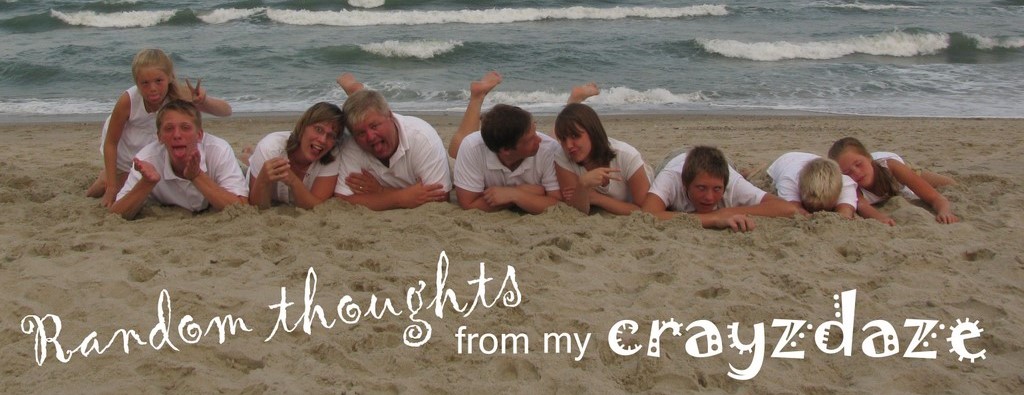One of the things that really stuck with me when I read this book was the description of how the Amish mourn.
I can still remember the sense of unreality after my mother died. A day or two before the funeral we had to go into town for something. I felt almost dazed; shocked that there was so much traffic, that so many people were going on with their lives despite the fact that my mother had died.
It was also evident that for everyone outside of our immediate family life pretty much returned to normal as soon as the funeral was done. Not that people weren’t kind—they were very kind. But life does go on. I’ve felt the same thing when my friends’ parents have died—I feel grief for them, I mourn with them, but then I have to fold some more laundry and feed my family. Having experienced a significant loss myself I always feel guilty that I am so easily able to slip back into my life knowing that my friend still mourns.
In the book Amish Grace the author described something that was fascinating to me. Amish traditions provide much more structure, space, and time for grief than typical American traditions do.
The first ritual of mourning is visiting. In one settlement, grieving families have visitors every evening for the first 2-3 weeks, followed by a year’s worth of Sunday afternoon visits.
The second ritual that facilitates the Amish grieving process is dress. Women wear black in public or at social gatherings when they’re in mourning. The length of time they wear the black is dictated by their relationship to the deceased; from six weeks for the death of a cousin to an entire year for a child, sibling, or spouse. This ritual reminds others in the community of the death so that they can respond with appropraite care for the bereaved.
Another grieving ritual involves writing memorial poetry to express their gratitude for the person’s life and to express their sorrow at their death. The poems may be published in Amish papers and also printed on card stock and distributed to family and friends as well.
The last ritual of grieving involves “circle letters.” Amish people from different states who share a common experience (having multipes, open heart surgery, death, etc) contribute to a letter that is mailed from family to family. The writers in the circle often keep in contact for many years. (This reminded me of my triplet support group on the internet, which was invaluable for many years!)
It kind of makes me wish that we hadn’t gotten rid of so many of the traditions of mourning in the United States. When you’re going through such a stressful experience those acts of kindness from other people mean such a lot. I envy the Amish customs that help them support each other better through these times…




Interesting. I'm not sure I would really like to be visibly mourning for so long. At first, I agree, it's quite shocking to see the world turning as usual and it would be nice to be treated with a little tlc - but after a short time, I enjoyed the pockets of time when I was out in public and I knew no one would give me that look of sympathy that could set me so easily to tears. It gave me a chance to 'escape' a little. Plus, I would think there would be an added complexity to the healing process when everyone knew you were in mourning - - - I think I might feel a little self conscious all dressed in black and laughing at a joke someone tells at a dinner party.
ReplyDeleteI often think of this when I see people at church, who I know have suffered some kind of loss. And, Lindsay's thoughts about how you're sort of hanging on anyway...it's complicated, isn't it. It mourn with those that mourn...I'm often hesitant to say something, knowing that after 7 years of my Dad's passing..a comment can bring tears..BUT, there is something about building the family community...that has to/needs to cross our personal barriers. Is there more to that scripture than meets the eye? Rambling thoughts...but, thanks for the thoughtful post. The book sounds interesting!
ReplyDeleteOops, should have read my post again..."TO mourn with those that mourn"... :)
ReplyDelete